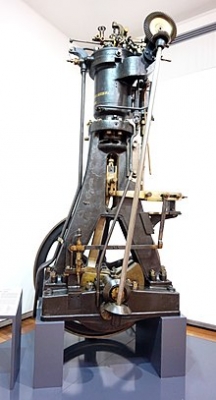
What all have you seen during a visit to a fuel station? You would have seen motorbikes and cars, and maybe even bigger vehicles on some occasions. You would have seen people attending to these vehicles, filling them up with the desired fuel. If you had noticed closely, you would have observed that the fuel station mainly provides two kinds of fuels – petrol and diesel.
While all the two-wheelers and some four-wheelers get their tanks filled up with petrol, other four-wheelers and certain bigger vehicles get their tanks filled with diesel. The type of fuel used by the vehicle is determined by the engine that it houses. While those with petrol engines use petrol, those with diesel engines use diesel as their fuel.
The “diesel” in these diesel engines comes from Rudolf Diesel, a German inventor and mechanical engineer. Born in Paris in 1858, Diesel decided on a career in engineering at the age of 14. He went to the Munich Technical University (Polytechnic Institute), and by the time he completed his studies there in 1880, he had received the highest grades the university had ever given in an examination since it was founded.
Inspired by Linde
Apart from his brilliant record as a student, Diesel was also drawn towards the thermodynamics lectures of German refrigeration engineer Carl von Linde during his time at Munich. This meant that Diesel not only went to work in the Linde refrigeration machine factory after his studies, but was also inspired to develop a new engine with increased thermal efficiency.
After a year of traineeship, Diesel was hired in Linde’s ice factory in Paris in 1881. By the end of the year, Diesel received his first patent – regarding the manufacture of transparent ice. As the years passed by, Diesel started devoting more time to his self-imposed task of developing a more efficient internal combustion engine.
By 1890, the year he moved to Berlin for a new post with the Linde firm, Diesel had conceived his idea for the engine. His concept of a “new, rational heat engine” was patented in 1892 and in the following year, on February 23, 1893, Diesel was granted the patent DRP 67 207 “on a principle of operation and construction for internal combustion engines”.
No external ignition
As opposed to the spark-ignition engine that requires an externally applied ignition to a mixture of air and fuel, Diesel’s compression-ignition engine relied on compressing air. The ignition was to be achieved by introducing the fuel to a cylinder full of air that is highly compressed, thereby reaching high pressures and hence, extreme heat.
Having built the first prototype of his engine in 1897, Diesel kept improving it over the years. Even though the engines he built never quite hit the efficiency he had predicted through his theoretical calculations, they were still way better than the peers. This meant that there were over 70,000 diesel engines – mainly in factories and generators- that were working by 1912.
Death remains a mystery
On September 29, 1913, Diesel disappeared from the steamship Dresden while travelling to Harwich, England from Antwerp, Belgium. A body floating in water and spotted on October 10 was identified to be Diesel. Even though Diesel’s continues to be a mystery, it was officially judged to be a suicide. Despite making a lot of money through his engines, Diesel was facing financial ruin during this voyage and was nearly broke. Conspiracy theories, however, suggest that Diesel’s death could well have been a murder.
In the year of his death, Diesel wrote that “I am firmly convinced that the automobile engine will come, and then I consider my life’s work complete.” He didn’t live to see it, but almost all vehicular diesel engines, till this day, continue to follow the basic principles that were set forth by Diesel.
Picture Credit : Google
